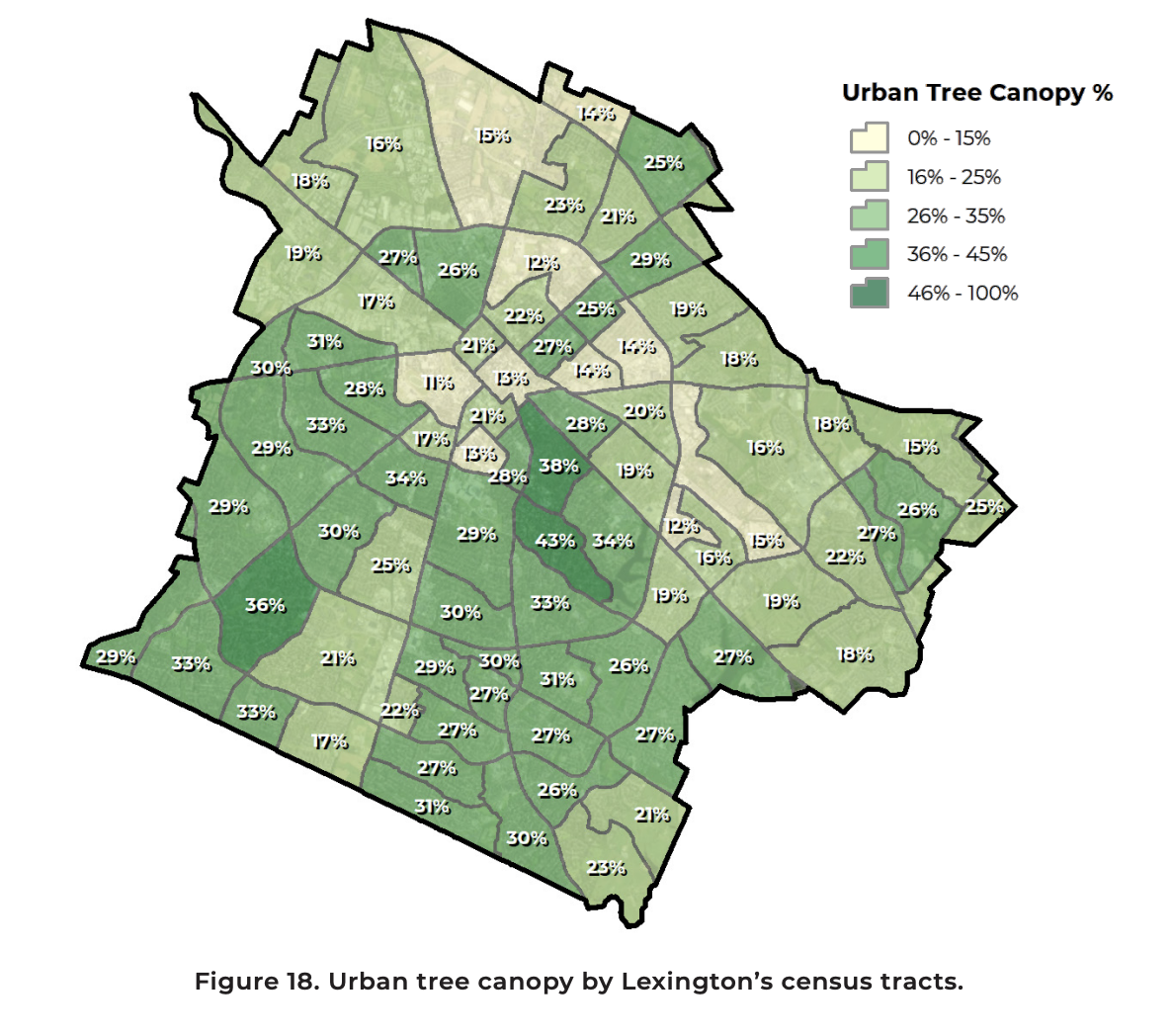
Tree Canopies and Urban Heat
RL Martens
Heat warped the air above the pavement, rising off of the roads, the sidewalks, and the roofs. I was dripping sweat. My dog was panting. It was mid-summer (2022) and the sun blazed down on us as we stepped out of the apartment to go for a walk. A short way into our usual walking route around the neighborhood, my dog found a rare patch of shaded grass, laid down, and refused to continue on. “I don’t blame him,” I thought, shaking my head as I touched the pavement and realized it was so hot that it was burning his paws. Last summer’s heat was so miserable that my usual modes of transportation- biking and walking- were off the table most days because they risked heat exhaustion. Even indoors, my air conditioning unit struggled to keep up.
Heat warped the air above the pavement, rising off of the roads, the sidewalks, and the roofs. I was dripping sweat. My dog was panting. It was mid-summer (2022) and the sun blazed down on us as we stepped out of the apartment to go for a walk. A short way into our usual walking route around the neighborhood, my dog found a rare patch of shaded grass, laid down, and refused to continue on. “I don’t blame him,” I thought, shaking my head as I touched the pavement and realized it was so hot that it was burning his paws. Last summer’s heat was so miserable that my usual modes of transportation- biking and walking- were off the table most days because they risked heat exhaustion. Even indoors, my air conditioning unit struggled to keep up.
One day last summer I realized it didn’t have to be this way. Not all Lexingtonians dealt with the same summer temperatures as many of my neighbors and I on the Northside did. I experienced this disparity when I ran an errand across town on a particularly hot day, and was shocked by the difference in temperature between my neighborhood and the Southland neighborhood I visited. Walking along sidewalks shaded by tall, broad trees, I experienced cool relief. The summer’s heat felt manageable under the umbrella of green. I imagined walking my dog around this neighborhood and being able to comfortably get around on foot or by bike.
Google Street View of Cardinal Lane in Lexington’s 10th District
Google Street View of 7th and Upper Street in Lexington’s 1st District
The 2022 Lexington Tree Canopy Assessment Report shows that my council district (1) has one of the lowest tree canopy cover percentages in the city, at 19%. The Southland district (10) has one of the highest percentages of canopy cover, at 28%. Enacting equitable greening through tree planting and maintenance is critical to ensuring that the effects of summer heat (and its predicted increase due to climate change) don’t fall disproportionately on some Lexingtonians.
Expanding and maintaining Lexington’s urban tree canopy would help mitigate the urban heat island effect which is worse in neighborhoods with less canopy cover. Responses to CivicLex’s On The Table (OTT) Participant Survey contain resounding and broad support for planting, maintaining, and protecting trees in Lexington. Concern for where these trees will be planted, however, is clear in the responses from Northside residents like myself: one 20-30 year old resident said that trees should be planted “Equitably. You can't just put trees out on Versailles road but neglect to do a door to door campaign on the Northside to plant more trees where they could thrive. Those trees need to also be maintained by the city.” Another Northside resident (aged 30-40) urged the city to “Work with formerly redlined neighborhoods to restore tree canopy, including street trees that make walking and biking safer in heat islands.”
Residents from other neighborhoods also urged the city to address the current spatial and socioeconomic inequities in urban canopy cover: an Andover respondent (aged 60-70) said “Protect and expand the tree canopy, especially in the inner city,” while a Castlewood/Loudon resident (aged 40-50) noted that it “Seems all the money and attention goes to rich neighborhoods. Like KU clear cutting trees. It happened for nearly two years in poor areas and no one cared on council until it effected [sic] rich people.”
With increased city investment in urban canopy cover in a neighborhood, however, comes the risk of “green gentrification,” which is when greening leads to a greater perceived desirability and resulting increase in property values and rents, potentially displacing residents. A 30-40 year old Idlehour/Woodhill resident who highlighted the need for “more tree canopies to lower the heat island effect” brought up this issue, articulating how “Protecting the environment is very important & needs to be addressed in combination with our current housing crisis. Greenspace can be a driver for gentrification when not equitably implemented across the city. People want greenspace which ups the cost of housing that is already too high for middle income households to afford let alone low income households.” Another resident (of Northside, aged 30-40) who advocated for planting more trees recommended establishing “policies to promote equitable green infrastructure, green jobs, and to address green gentrification.” In already gentrifying neighborhoods like Northside, this issue is especially pressing.
OTT responses show that residents overwhelmingly want tree planting, care, and maintenance across all of Lexington’s neighborhoods. This will improve health outcomes for residents and make walking and biking more viable. For this greening to be truly equitable, however, the city must enact policies to protect residents from displacement through green gentrification, such as limiting rent increases, moving housing to community ownership via land trust, and involving communities in planning and decision-making. With measures such as these in place, Lexington could become a more livable city for all its residents. I can already imagine the feeling of stepping out into the cooling shade of an equitable urban canopy


